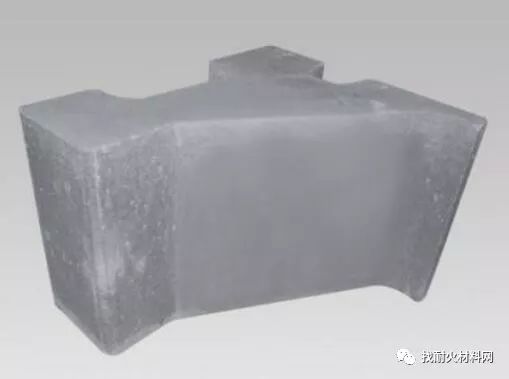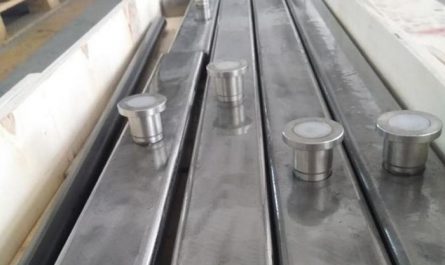Amorphous refractory castables and castable preforms have been widely used in more and more high-temperature industrial kilns.

However, many enterprise users have found that some abnormal phenomena are found in the storage or maintenance of refractory castables or prefabricated parts, such as pulverization, white hair and so on.
In fact, these are caused by the contact between the hydration products of high alumina cement in the refractory castable and the acid gas in the atmosphere.
With the evaporation of water in the castable, salts continue to migrate and precipitate to the surface, and then slowly aggravate the damage process of the refractory castable.
We will analyze these phenomena today.
During the storage of prefabricated parts made of refractory castables containing cement, there are pulverization phenomena.
Some grow “white hairs” on the surface, commonly known as white alkali, which causes the pulverization of the surface layer of castables, and in serious cases, the strength of castables decreases.
1.
Carbonation of castable carbonation of high alumina refractory cement castable is often considered to be one of the main reasons for the reduction of castable structure and spalling.
High alumina cement combined with refractory castable is exposed to the air, and the hydration products react with CO2 gas in the air.
Moreover, under the condition of high humidity, the refractory castable is more prone to carbonation, and compared with the dense castable, the light castable with high water content is more prone to pulverization, which shows that under the condition of water participation, the hydration products interact with CO2 acid gas, and the pH value of the liquid in the single-phase pores decreases sharply, which makes all the new hydrated organisms in the refractory castable unstable.
Calculation results of corrosion reaction of CO2 on hydration products of refractory castable (25 ℃) 2 Compared with the carbonation of the hydration products of high alumina cement, the sulfation phenomenon of castable has not attracted enough attention from the construction party and users.
In the atmosphere, in addition to CO2 acid gas, there are SO2, H2S and other gases, which also have a strong corrosive effect on the hydration products of the matrix part of high alumina cement castable, Finally, the castable is powdered and peeled.
The calculation results of the corrosion reaction of SO2 to the hydration products of castables (25 ℃) and the calculation results of the corrosion reaction of H2S to the hydration products of castables (25 ℃) are the equations for the sulfation reaction of refractory castables.
In addition to the sulfation process caused by the erosion of SO2 and H2S in the air, the high alumina cement hydrate may also interact with SO42 – or H + in the water source.
With the increase of their activity and acidity, the stability of the hydration products of the three high alumina cements also decreases sharply.
3.
Salting out phenomenon of castable salting out phenomenon on the surface of refractory castable is another important factor aggravating the damage of castable structure.
In the process of curing or natural drying of refractory castables, with the evaporation of water, some soluble carbonate, sulfate, chloride, phosphate and other salt compounds focus and crystallize on the surface of refractory castables.
This phenomenon is often called salting out phenomenon.
As the water evaporates from the refractory castable surface, these ions migrate and gather directionally with the water molecules from the inside to the castable surface, or react with the acid gas in the air on the castable surface.
The salts generated after the hydrate reaction focus on the surface.
Finally, these salt compounds crystallize and precipitate because they exceed the solubility in water.
In fact, all soluble salts containing crystal water, including chloride, sulfate, carbonate, etc., have the process of crystal water removal, accompanied by the change of crystal form and volume, which is one of the reasons for aggravating the pulverization, peeling and falling of surface structure when the castable is cured in air.
If you have any questions about unshaped refractory materials and refractory castable prefabricated parts, please scan the QR code below and submit it with one click.
We will provide free product solutions.
At the same time, you can also directly call 13608696100 for relevant products and price consultation.
Long press to identify and submit the problem ↙ Click“.




